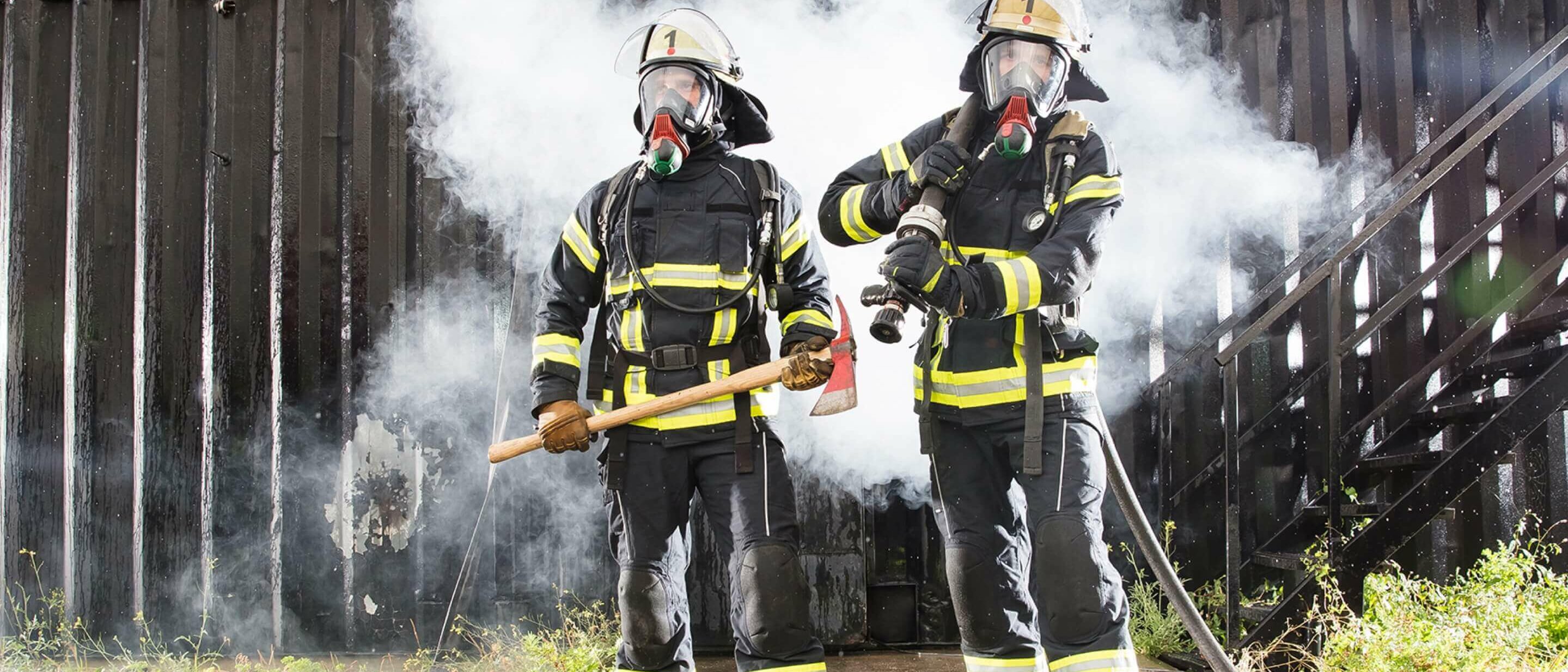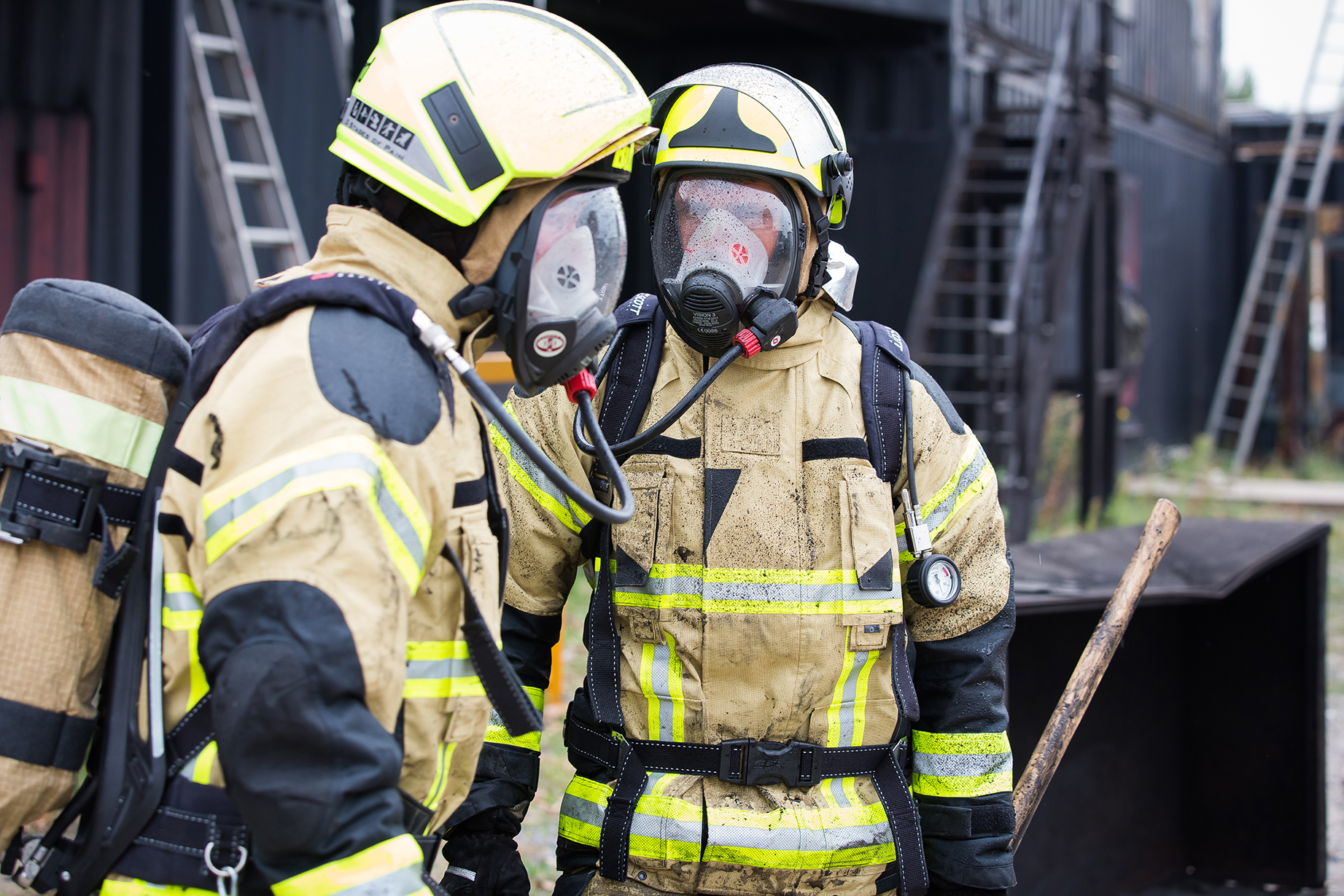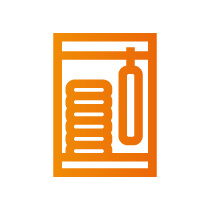Fire & Rescue
Service

Important information and tips for your protective equipment
01 - Choosing the right protective clothing
In order to select suitable protective clothing the user must, among other things, carry out a hazard analysis (EN 469-2005, Appendix G). In the event that protective clothing is chosen for a specific operating area, it must be ascertained that hand and foot protection and further protective aspects provide sufficient protective capability for the environment in question and that the face and the head are protected.
Protective clothing for firefighting may not be too tight as not only the freedom of movement is impaired but also, as a result of an insufficient volume of air between outer and inner clothing, effective insulation of the total clothing is reduced. Therefore, avoid clothing which is too tight or too short. A shrinkage of a maximum of 3% should be taken into consideration in resizing.
02 - Determining the correct size
Determination of the correct size begins with the body size and the circumference of breast and waist. Of additional importance as core measurements for good-fitting personal protective clothing are the length of the arm and inside leg.
When being fitted out it should be noted that an overlap between jacket and pants must also be ensured in the case of the following movements:
-
Raising the hands with outstretched arms above the head
-
Bending forwards with legs extended until hands touch the floor.
As a result of the diversity, the different models and combinations make it possible to choose a suitable model for every person.
03 - Period of wear for protective clothing
Operation clothing can become unusable after only one usage or, in the case of its being seldom used or increased use in technical assistance, continue to be intact following a number of years.
The lifespan depends upon usage involved, soiling (e.g., by chemicals) as well as by the intensity or, respectively, the execution of the washing and drying and the washing and impregnation agents used. In normal usage and with the recommended care, the protective clothing can be subjected to 25 or even as many as 50 washing processes.
Thus, container training can cause a more intensive head load than many assignments. The frequency of assignments is normally different for a professional fire service than that for a voluntary fire service, which, in itself, can be an indicator for a more rapid wear and tear.
A complete documentation of the events in the case of the assignment is an important tool for evaluating whether the clothing has to be taken out of use or it is to be subjected to a special check. Externally visible damages such as discoloration of the exterior, discoloration of seam threads and charred reflective strips can be an indication of internal layer damage and must be evaluated by qualified personnel. In all cases, the membrane is the most sensitive part of the clothing and damages are often not visible from the exterior.
04 - Treatment and care of protective clothing
No parts may be subsequently sewn on (e.g., nationality marking), This could lead to damage to the inner membrane or deterioration in the protective properties. There should be no sharp objects left in pockets.
Protective clothing is to be examined after every assignment for Impairment of the functional properties. Soiling is to be removed from the clothing prior to every assignment. Damage to the clothing as a result of contact with flames and reflective strips with severely diminished reflective properties and/or fluorescent effect are to be renewed.
Important: All repairs of protective clothing must be carried out by a specialized company.
When protective clothing has been subject to even minor splattering with liquid chemicals or flammable liquids, the wearer must immediately retreat from the danger zone. The clothing is to be removed as quickly as possible, cleaned and then examined by a qualified person. If necessary, the clothing is to be taken out of use.
05 - Washing the protective clothing
To preserve the protective effect for as long as possible the instructions on the cleaning and care instructions label have to be observed.
Summary of the most important points:
-
Velcro fasteners and zip fasteners are to be closed and covered prior to washing and cleaning treatment
-
Pockets are to be emptied
-
Lettering as well as collars and metal objects (snap hooks) should be removed, and do not use needles for marking
-
Do not clip on labels or insert needles
In the case of severely greasy or oily soiling it is recommended that this be treated with a solvent if this is permissible in the labeling. Washing in a household washing machine is not recommended as this could cause a possible carryover of the contamination into the private sector. A specialist company should be involved in such case.
06 - Storage of protective clothing
Clothing should not be subjected to direct sunlight. Storage between assignments should be executed in such a way that the articles can dry in a free circulation of the air. Larger quantities should be hung up in storage.
07 - Return of purchased goods
In the case of a return please forward the goods to the following address:
LHD Group Deutschland GmbH
Logistikzentrum
Herseler Str. 22-24
50389 Wesseling
Please note that the appropriate return form or delivery note with the reason for return should be enclosed with the article whether this is the case of an exchange or a complaint. In the event that this is not available or no reason for the return is given, acceptance of the article is not possible.
A new order on the other hand cannot be included neither in the case of an exchange for another size nor for another article. In such cases please contact your personal discussion partner or our head office by phoning +49 (0)2236-3307-100 or info(at)lhd-group.com.
The returned clothing should be in the original packaging to avoid wear and tear or further damage.
In the case of a return as a result of damage or other complaint complete and enclose the filled repair form.
08 - Instructions for assignment clothing as per ISO 11612:2008
The individual articles of clothing are part of the personal protective outfit in the case of fires and technical assistance assignments, however, outwith the danger area of a flash flame formation. Sufficient protection is created only when all articles of clothing are closed in the proper manner. Do not wear any flammable or fusible articles of clothing over these articles of clothing. In the case of danger of explosion additional inner clothing of flame-retardant fibers, such as, for example, Aramid, should be worn. Do not put on or remove the clothing in a potentially explosive environment. Lettering, emblems, name tags or other marking which are subsequently added must be made of flame-retardant materials.
TO YOUR VISIT!





